The English Bulldog Review
History:
The term
"Bulldog" was first mentioned in literature around 1500, the oldest
spelling of the word being Bondogge and Bolddogge. The first reference to the
word with the modern spelling is dated 1631 or 1632 in a letter by a man named
Preswick Eaton where he writes: "procuer mee two good Bulldogs, and let
them be sent by ye first shipp". The name "bull" was applied
because of the dog's use in the sport of bull baiting. This entailed the
setting of dogs (after placing wagers on each dog) onto a tethered bull. The
dog that grabbed the bull by the nose and pinned it to the ground would be the
victor. It was common for a bull to maim or kill several dogs at such an event,
either by goring, tossing or trampling. Over the centuries dogs used for
bull-baiting developed the stocky bodies and massive heads and jaws which
typify the breed as well as a ferocious and savage temperament. Bull-baiting –
along with bear-baiting – reached the peak of their popularity in England in
the early 1800s until they were both made illegal by the Cruelty to Animals Act
1835. This amended the existing legislation to protect animals from
mistreatment and included (as 'cattle') bulls, dogs, bears and sheep, so that
bull and bear-baiting as well as cockfighting became prohibited. Therefore, the
Old English Bulldog had outlived its usefulness in England as a sporting animal
and its active or 'working' days were numbered. However, emigrants did have a
use for such dogs in the New World. In mid-17th century New York, Bulldogs were
used as a part of a city-wide round-up effort led by governor Richard Nicolls.
Because cornering and leading wild bulls was dangerous, Bulldogs were trained
to seize a bull by its nose long enough for a rope to be secured around its
neck.Bulldogs as pets were continually promoted by dog dealer Bill George.
Despite slow maturation so
that growing up is rarely achieved by two and a half years, bulldogs' lives are
relatively short and at five to six years of age they are starting to show
signs of aging.
In time, the original old
English Bulldog was crossed with the pug. The outcome was a shorter, wider dog
with a brachycephalic skull. Though today's Bulldog looks tough, he cannot
perform the job he was originally created for as he cannot withstand the rigors
of running and being thrown by a bull, and also cannot grip with such a short
muzzle.
The oldest single breed
specialty club is The Bulldog Club (England), which was formed in 1878. Members
of this club met frequently at the Blue Post pub on Oxford Street in London.
There they wrote the first standard of perfection for the breed. In 1894 the
two top Bulldogs, King Orry and Dockleaf, competed in a contest to see which
dog could walk 20 miles. King Orry was reminiscent of the original Bulldogs,
lighter boned and very athletic. Dockleaf was smaller and heavier set, more
like modern Bulldogs. King Orry was declared the winner that year finishing the
20 mile walk while Dockleaf collapsed.
At the turn of the 20th
century, Ch. Rodney Stone became the first Bulldog to command a price of $5000
when he was bought by controversial Irish-American political figure Richard
Croker
Description:
The English Bulldog is a
wide, medium-sized, compact dog with short legs. The body and head are massive
with extra skin on both the skull and forehead falling in folds. The cheeks
extend to the sides of the eyes. The muzzle is wide, short and pug with a
broad, deep stop. The black nose is broad with large nostrils. The dark eyes
are deep set. The rose ears are small, thin and set high on the head. The jaws
are massive, very broad, and square with hanging upper lips. The teeth should
have an under bite. The tail is either straight or screwed and carried low. The
short, flat coat is straight, smooth and glossy. Coat colors include red
brindle and other shades of brindle, solid white, solid red, fawn, fallow,
piebald, pale yellow or washed-out red or white or a combination of these
colors.
Temperament:
The English Bulldog is a
very serious, devoted and loyal breed of dog. They are a very attention-seeking
dog and are not considered appropriate for homes where they would be left alone
for extended periods of time. The English Bulldog has been
bred as a companion dog, and really does desire and require constant attention
from its owners. The breed is typically a very calm and well-behaved dog,
although they are considered a dominant breed and must learn that the humans
are in charge in the household. The English Bulldog will bond very strongly
with its family, and often has difficulty in re-homing after that bond has been
established. The English Bulldog loves to please, and will quickly learn what
the owners are requiring of it. Highly intelligent, they do best with some
repetitive training but also lots of variation. They are an excellent companion
dog for both other dogs as well as non-canine pets. Proper socialization is
important with this breed, as they can be somewhat dog-aggressive, especially
the intact males. Neutering and training, as well as constant interaction with
other dogs, can prevent this from becoming problematic. Most English Bulldogs
make wonderful pets for families with younger or older children, and the breed
has a natural patience with children and the elderly. A slow moving breed, they
are not ideal for kids that want a pet that is running with them all day, but
they are very loyal, loving and protective of children. The English Bulldog has
a unique temperament. People can mistake their often slow response to commands
as laziness, but those that know the Bulldog breed know that the dogs like to
consider the command before simply jumping up and doing it. A problem solver,
the Bulldog likes a mental challenge, and will approach new activities and
events in a thoughtful and consistent manner. They are very good travelers, and
typically love to go for a ride in the car. The English Bulldog is a natural
protector of the home and property. While not a problem barker, they will let
you know when strangers approach. Their appearance is often enough to warn off
intruders, but the Bulldog will use its strength to defend its property if
required. Potential owners of English Bulldogs should know that the breed is
prone to digestive problems, resulting in some flatulence issues. Controlling
the diet can eliminate this issue to a large extent. They are also a snoring
breed, and are prone to drooling.
Height,
Weight:
Height: about 12 - 16 inches (31 - 40 cm)
(there is no prescribed height, but shorter Bulldogs are more prized when being
shown)
Weight: Males 53 - 55 pounds (24 – 25 kg)
Females 49 - 51 pounds (22 – 23 kg)
Living
Conditions:
The English Bulldog is good
for apartment life. They are very inactive indoors and will do okay without a
yard. This breed is an indoor dog. Bulldogs do best in temperate climates as
the breed can chill easily in cold weather and have trouble cooling off in very
hot weather.
Exercise:
The English Bulldog doesn't
require much exercise but would do well with a short walk occasionally. This
breed tires out easily and considering the flat muzzle, should always have
available water.
Life Expectancy:
An average of 8 years. Some
live longer while others live shorter lives.
Grooming:
The short coat of the
Bulldog only requires an occasional brushing. But because he sheds you may find
yourself brushing him once or twice a week to remove loose hair. (What you get
out with a brush doesn't fall out in your home!)
Conclusion:
The bulldog's heavy,
thick-set, low-slung body with wide shoulders gives it a low center of gravity,
a vital asset when fighting a large animal. The massive head, of which the
circumference should equal at least the height of the dog at the shoulder,
gives ample room for muscular attachment for the strong, wide jaws. The
undershot bite allows a tight grip, at the same time giving breathing room
through the nose. The limbs are sturdy, the gait loose-jointed, shuffling, and
rolling — this is not a breed that needs to run! The coat is fine and glossy.
Despite its
"sourmug," the bulldog is jovial, comical and amiable, among the most
docile and mellow of dogs. It is willing to please, although it retains a
stubborn streak. It is very good with children. Most are moderately friendly
toward strangers. Although some can be aggressive with strange dogs, the breed
is quite good with other pets.
Videos:
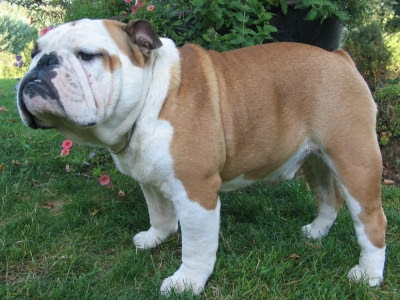



.jpg)

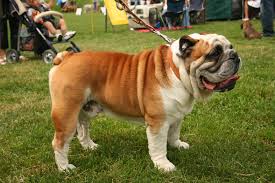
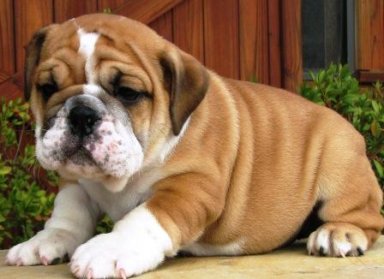

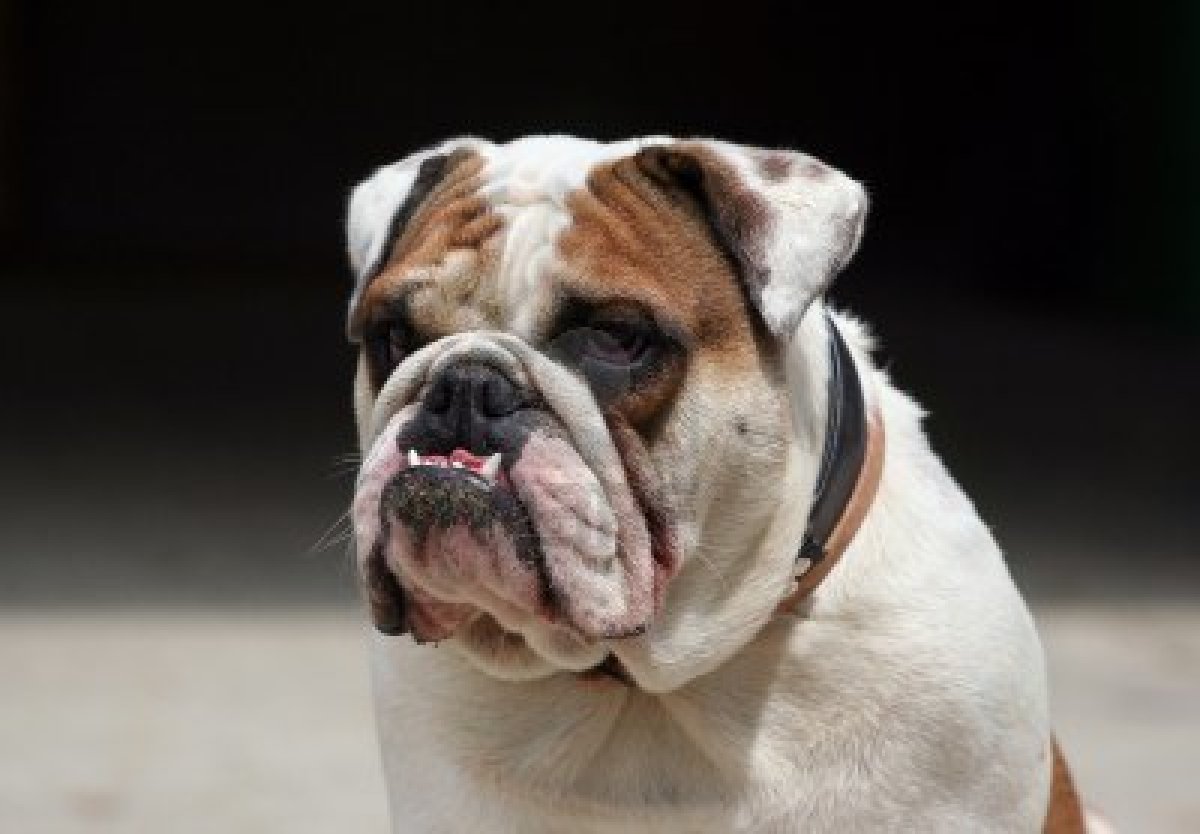
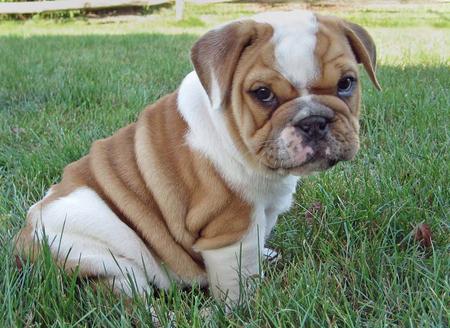
.jpg)

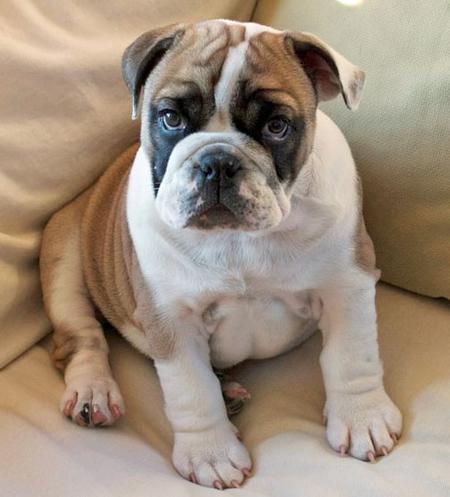

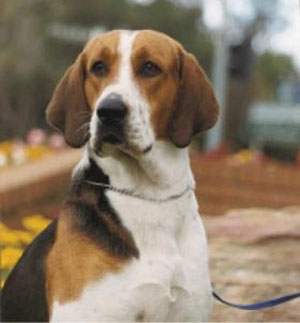
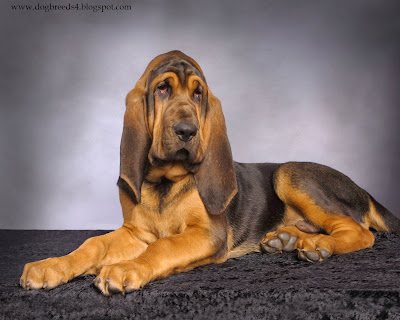
Hi,
ReplyDeleteYour article about choosing of the best English Bulldog breeder is very useful, as when you choose a dog you choose the devoted friend first of all! And I`d also like to share with you a listing of the best English Bulldog breeders, that will offer you a strong and healthy Bully just for you! please visit English Bulldog Pups
and find more information.
Have a nice day...!!
This information is great!! I'd really love to put this on my blog!
ReplyDeleteDogs Best Friend Australia
This was a really great contest and hopefully I can attend the next one. It was alot of fun and I really enjoyed myself.. dogbreeds.wiki/size-small
ReplyDelete